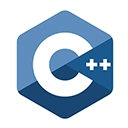Creating desktop applications with C++ is a common practice, and it allows developers to build robust, cross-platform software. In this guide, we'll introduce you to the concept of desktop application development with C++ and provide a sample code example using the Qt framework.
1. Desktop Application Development in C++
Desktop applications are software programs designed to run on a user's computer. They offer a graphical user interface (GUI) for users to interact with. C++ is a popular choice for desktop application development because of its performance and cross-platform capabilities. Key considerations when developing desktop applications in C++ include:
- GUI Framework: Choosing a GUI framework or library to create the user interface. Common choices include Qt, GTK, and wxWidgets.
- Platform Compatibility: Ensuring your application works on various operating systems, such as Windows, macOS, and Linux.
- User Experience: Designing an intuitive and user-friendly interface to meet user expectations.
2. Sample Code: Creating a Simple Desktop Application with Qt
Let's dive into a basic example of a desktop application using the Qt framework. In this example, we'll create a simple window with a label:
#include <QApplication>
#include <QMainWindow>
#include <QLabel>
int main(int argc, char* argv[]) {
QApplication app(argc, argv);
QMainWindow mainWindow;
mainWindow.setWindowTitle("My C++ Desktop App");
mainWindow.setGeometry(100, 100, 400, 200);
QLabel label("Hello, C++ Desktop App!", &mainWindow);
label.setGeometry(150, 80, 200, 30);
mainWindow.show();
return app.exec();
}
3. Conclusion
Developing desktop applications with C++ offers a powerful and flexible approach to creating software for various platforms. The example provided is a simple starting point, but desktop applications can range from text editors and calculators to complex software like web browsers and graphics editors. Your choice of GUI framework and the complexity of your application will depend on your specific project requirements.

